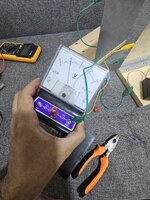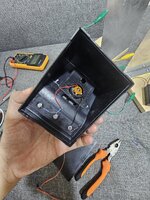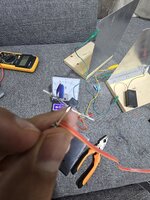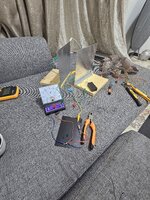dhiaa12
Newbie level 5

Hello dears,
Its really confusing, one guy demonstrated in video am attaching; he demonstrated how voltage of parallel plates capacitor changes when he changes distance between plates, area and dielectric.
I have tried same experiement with same tools that he have, but I failed. The capacitor similar to mine should be around 80 pf ( Aluminum 20 cm × 20 cm in dimensions ) and I think after he charge it and disconnect it from power supply, he should gets zero voltage as I get ! Due to small capacitance and charge should leak quickly.
is he doing something I can't understand??
How he gets voltages on plates after disconnecting the capacitor?
Any ideas?
Its really confusing, one guy demonstrated in video am attaching; he demonstrated how voltage of parallel plates capacitor changes when he changes distance between plates, area and dielectric.
I have tried same experiement with same tools that he have, but I failed. The capacitor similar to mine should be around 80 pf ( Aluminum 20 cm × 20 cm in dimensions ) and I think after he charge it and disconnect it from power supply, he should gets zero voltage as I get ! Due to small capacitance and charge should leak quickly.
is he doing something I can't understand??
How he gets voltages on plates after disconnecting the capacitor?
Any ideas?







